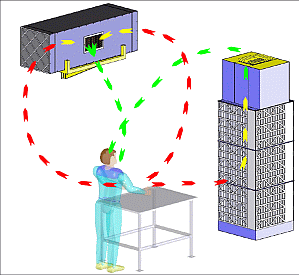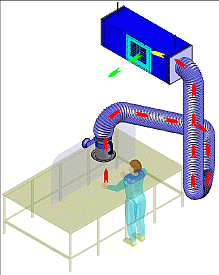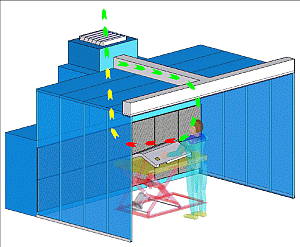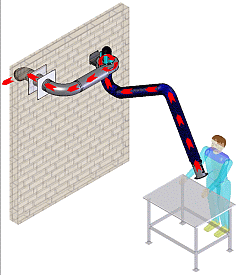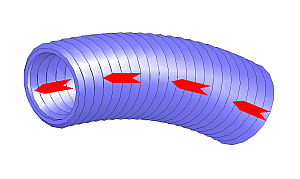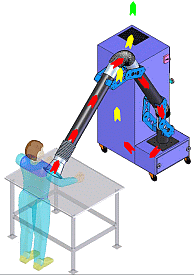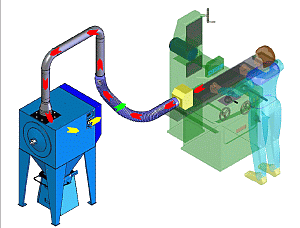
MRO - Torch Cutting Ventilation
In the torch cutting process, hazardous fumes are generated, and when airborne, create an unsafe work environment. When these fumes are inhaled, they can cause long-term health problems to workers.
Below is a full list of engineering control methods for torch cutting ventilation.
Below is a full list of engineering control methods for torch cutting ventilation.
For further support, please contact us directly at 1-888-862-5356.
Ambient Air Cleaners
Ducted Air Cleaners
Dust Control Booths
Extraction Arms
Industrial Hose & Duct Work
Lev-Co offers a wide variety of lightweight, flexible, abrasive-resistant, heat-tolerant, innovative technical hoses to provide solutions for a wide range of industrial & automotive applications. Here are some general design velocities when using "CAPTURE" Hoods:
Smoke (e.g. Welding):
- Capture Velocity 100 FPM
- Transport Velocity 3000 FPM
- Minimum Face velocity 2355 FPM
Dust (e.g. Grinding):
- Capture Velocity 500 FPM
- Transport Velocity 4000 FPM
- Minimum Face Velocity 4000 FPM
Gas (e.g. V.O.C.'s):
- Capture Velocity 50 FPM
- Transport Velocity 2000 FPM
- Minimum Face Velocity 785 FPM
Mist:
- Capture Velocity 100 FPM
- Transport Velocity 2250 FPM
- Minimum Face Velocity 1766 FPM
FOR MORE SUPPORT IN SELECTING THE RIGHT HOSE pls EMAIL us with details on your application at: sales@lev-co.com.
Portable Filter Units
Wall/Floor Mounted Filters

